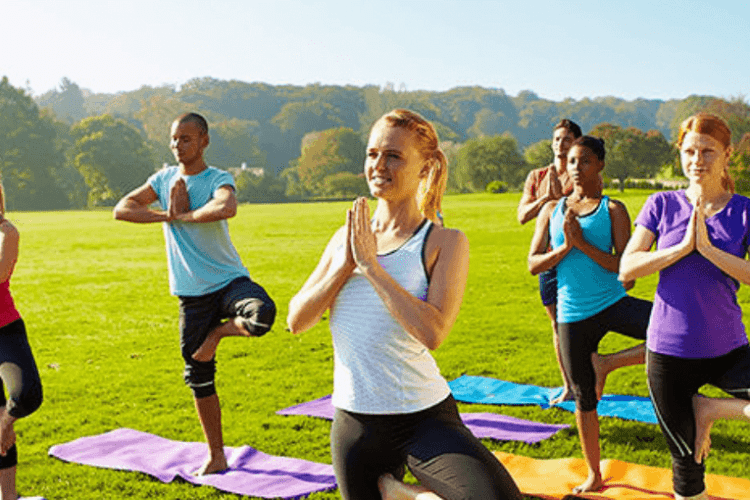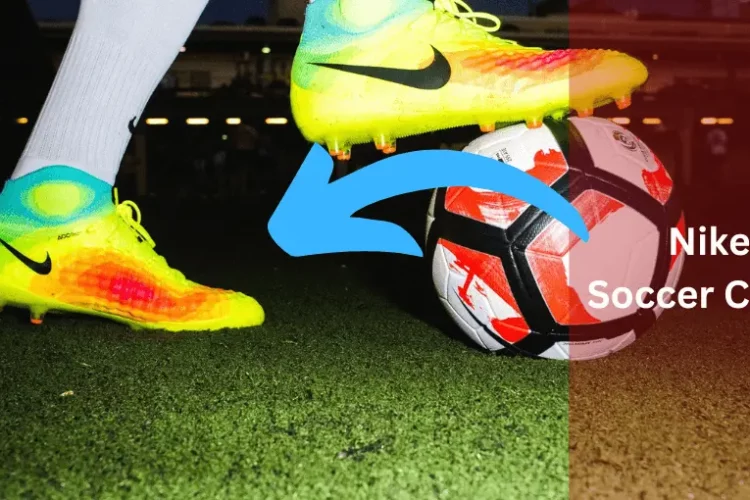What Are Soccer Cleats: Everything You Need to Know
Soccer requires the use of a range of equipment. But soccer cleats are among the most critical items of gear that each player wears throughout a game.
However, if you’re new to soccer, you might not know what are soccer cleats?
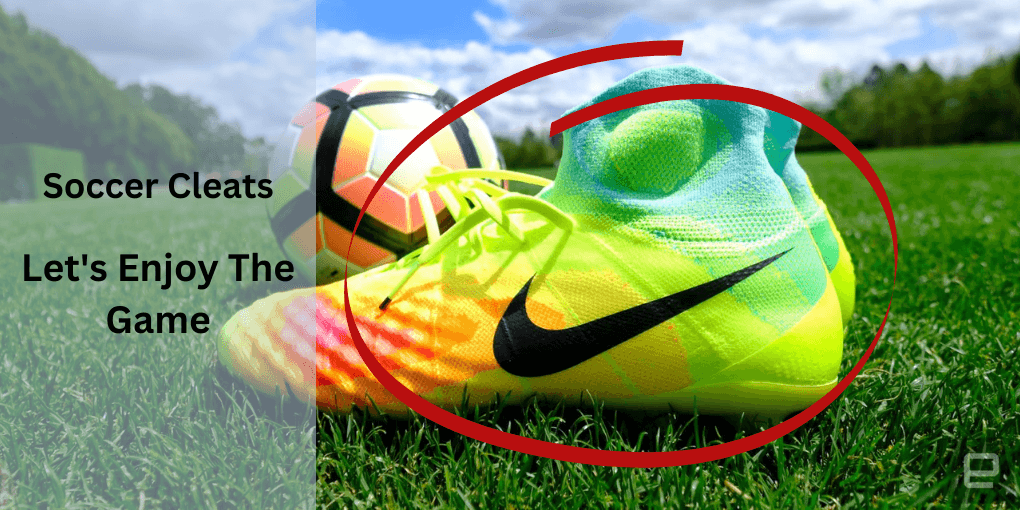
So, don’t worry. I am Reko, here to give you a clear concept from my many years of experience!
Renowned soccer player Virgil van Dijk says, “As a defender, I need cleats that provide stability and protection. Forwards may prioritize speed, but finding the right balance for your position is key.”
So, I’ll also review all the information you need to know about them in this article. Read the article and enjoy it!
What Are Soccer Cleats?
Soccer cleats are a crucial component of every player’s equipment because the game of soccer relies heavily on kicking and passing the ball with the foot.
Soccer cleats are made specifically for soccer players.
so that they would feel at ease and perform at their best during both training and competitive sports.
Types of Soccer Cleats
There are various styles of soccer cleats available on the market.
Based on the environments they play in and their position, soccer players decide what kind of soccer cleats they need.
Let’s discuss the types of cleats for soccer players.
Firm Ground Cleats
The typical soccer footwear design features firm ground cleats, commonly referred to as molded cleats.
For traction control, they have non-removable rubber or hard plastic structures on the bottom.
The best soccer cleats for typical grass pitches are firm ones.
Playing capacity: Intermediate and beginner players.
Field condition: Most grass fields and all types of weather.
Soft Ground Cleats
Replaceable cleats, often known as soft ground cleats, are detachable studs that may be changed to accommodate various surface and environmental conditions.
The cleats include studs that are available in different lengths and materials, such as hard plastic or plastic with metal tips.
Playing capacity: Intermediate and advanced level players.
Field condition: These cleats can be adjusted for various grass field types and weather conditions, but they cannot be used for indoor or turf play.
Artificial Grass Cleats
As the low-maintenance playing surface is more inexpensive for many schools, clubs, and other soccer groups, artificial grass fields are becoming more prevalent.
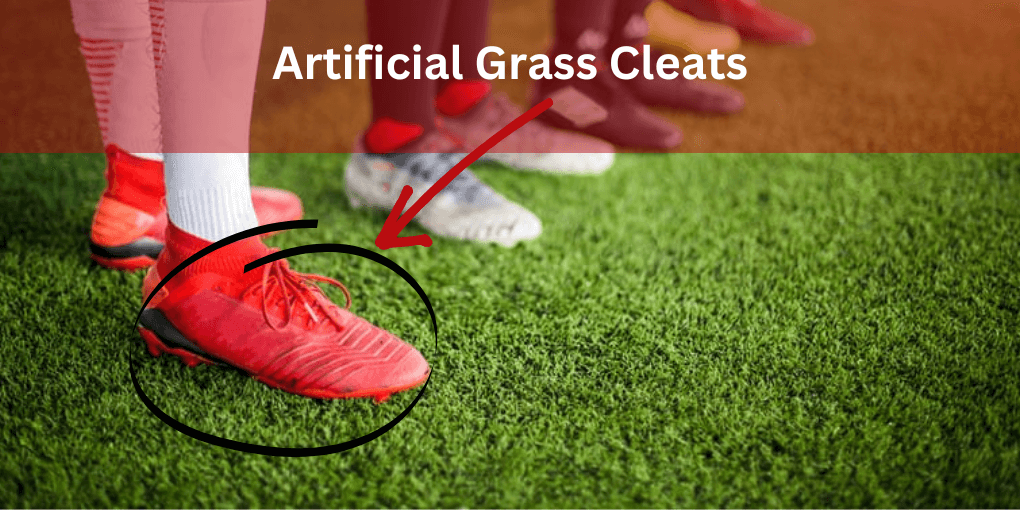
There are more artificial grass cleats accessible now because of their rising popularity.
Rubber studs on artificial grass cleats are shorter to correspond with the shorter length of modern artificial grass.
However, compared to the bottom of turf soccer shoes, the studs are often longer and fewer.
Playing capacity: players of all skill levels playing on artificial grass.
Field condition: On artificial grass pitches as well as on soft or hard ground, a player may use artificial grass cleats.
However, as they can damage the surface, soft or hard ground cleats shouldn’t be used on artificial grass.
Multi-Ground Cleats
Hard-ground cleats are another name for multi-ground cleats.
They work effectively on hard surfaces, including artificial grass and hard natural terrain (like frozen fields).
Instead of lengthier studs, the bottom of the shoe has shorter ones, generally with a combination of circular and bladed studs.
It can become caught in the hard ground and injure someone.
As a second set of cleats, multi-ground cleats are a fantastic idea.
Playing capacity: players who are intermediate to expert
Field condition: Artificial grass, as well as frozen or hard natural fields.
Turf Soccer shoe
Turf shoes can also be used on harsher soccer fields, such as artificial turf fields and hard outdoor fields.
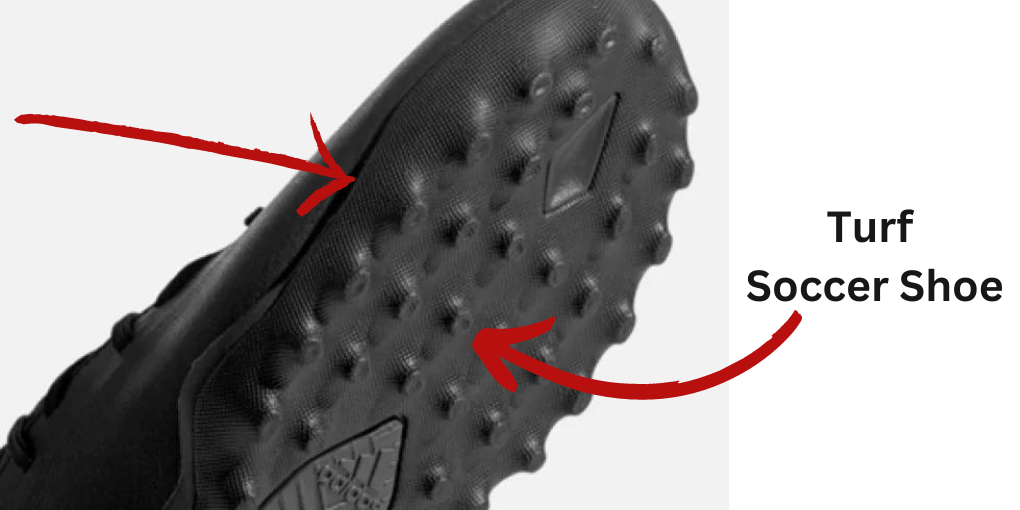
On frozen or hard surfaces, they may be substituted for the game’s actual shoes but are usually worn for training.
Instead of distinct studs, the shoe’s bottom has a raised pattern made of hard plastic or rubber.
Playing capacity: On turf, players of all skill levels compete.
Field condition: Synthetic turf and firm natural ground.
Indoor Soccer Shoes
Futsal and indoor soccer are not the same game, but they may require the same indoor soccer shoes.
Futsal players compete on hard surfaces such as a gym floor or a basketball court.
Inside soccer players can play on a hard surface court or indoor artificial turf.
Hard-surface indoor soccer shoes have a rubbery exterior yet have the appearance of conventional low-cut sneakers.
However, flat-bottomed shoes are made to provide traction on indoor surfaces like courts.
Playing capacity: playing on hard indoor surfaces at all skill levels.
Field condition: Indoor soccer boots should be worn on hard surfaces (like a basketball court).
On indoor artificial turf, teams are permitted to play indoor soccer. Soccer boots or turf shoes are appropriate in this situation.
Why Need Soccer Cleats
Soccer players need to be agile and have good footwork.
Every player’s performance depends on their soccer cleats.
A soccer player typically runs 7 miles in a single match. So, in a football game, soccer cleats are the most essential equipment.
Let’s read some importance of soccer cleats:
- Soccer players require cleats that support their feet and ball-handling abilities.
- Soccer cleats help players to move quickly and grip the ground.
- It safeguards their body, particularly their feet, from harm.
- Soccer players can sprint with the ball while turning quickly on the pitch due to the friction and traction that soccer cleats give.
Brands Of Soccer Cleats
Both indoor and outdoor soccer cleats are sold by a wide range of different brands.
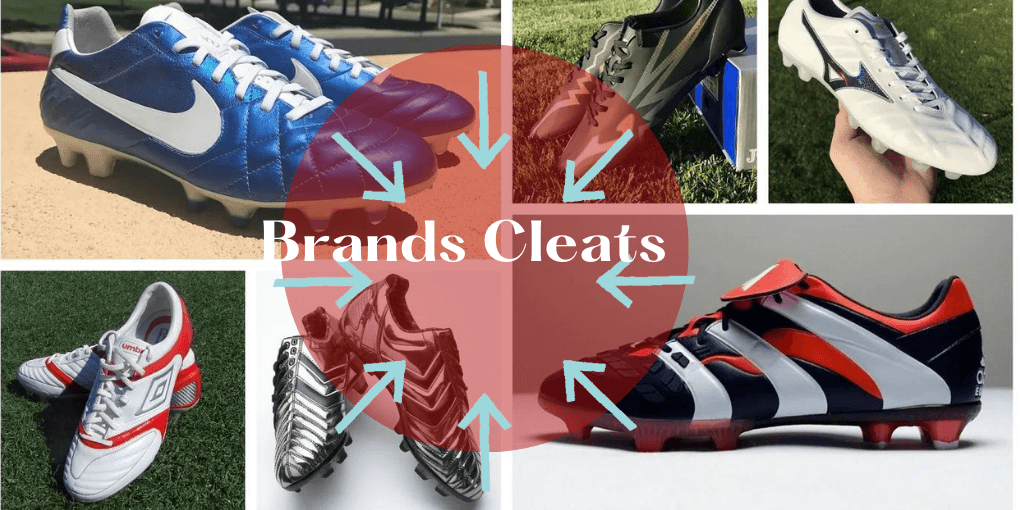
A soccer player’s performance may be improved by patented technology or distinctive features offered by some manufacturers.
You can buy your favorite brand for getting a great experience according to our buying guide of best soccer cleats.
Adidas
Soccer players frequently wear and are familiar with Adidas indoor soccer shoes.
The soles and ankles of the foot, as well as the entire foot, are strongly supported by Adidas soccer cleats, which are lightweight.
Adidas’s cleats include a primeknit cloth upper that also allows for ventilation and predator technology, which adds additional texture.
Nike
Soccer cleats from Nike are renowned for their superior performance and innovative technologies.
For instance, the unique flyknit uppers on Nike shoes are a form-fitting portion of the shoe that Nike specifically created using specific materials to give players a lot of flexibility and ventilation.
Puma
When it comes to indoor soccer shoes, puma is another well-known manufacturer.
The business developed an innovative technology that enhanced turf play performance.
The upper materials of puma shoes are often thinner, providing a better potential for intimate touch with the soccer ball.
A Short History Of Soccer Cleats
Although you might take a pair of soccer cleats for granted, their history is actually rather varied and fascinating.

We’ll examine the development of soccer cleats and some of the top choices available right now in this succinct essay.
You’ll discover a lot of intriguing information, whether you’re looking for a new pair of soccer cleats or are just curious about this peculiar footwear.
From 1900 To 1940
During this time, little changed in terms of soccer cleats. The most notable development happened in soccer cleats at this time.
at this time there were set up of various soccer shoe businesses market for use by players.
Companies that were founded during that time period include
- Gola (1905)
- Valsport (1920)
- Hummel (1923)
From 1940 To 2000
Due to cheaper air travel and an increase in international matches, soccer cleats saw a considerable change after World War 2.
Soccer cleats that were lighter and more flexible began to be produced by various businesses around this time.
During this time, the globally renowned shoe companies Adidas and Puma were founded.
Adolf and Rudolf Dassler, two German brothers who had founded the “Dassler Brothers Shoe Factory” in 1924, allegedly fell out.
While Adolf split from his brother in the early 1940s, staying in the original factory and changing the company’s name to Adidas.
Rudolf moved over the river and established his own shoe manufacturer, branding it PUMA in 1948.
Soccer cleats underwent significant advancements along with the advancement of technology and the 1969 moon landing.
The lower cut instead of the ankle-high style that was initially seen in soccer history underwent a complete redesign.
Quick players might take full advantage of having free ankles to move more quickly on the pitch thanks to lower-cut designs.
Pele lifted the 1970 FIFA World Cup trophy while sporting Puma King soccer cleats, signaling the start of the 1970s.
In the 1970s, sponsorship boomed, and athletes started earning money by wearing specific brands while competing.
In 1979, Adidas introduced the Copa Mundial soccer cleats, which are still in use today.
In the 1980s, as technology improved, so did the style and substance of everything around us, including soccer cleats.
At the 1986 World Cup, Maradona’s Puma cleats stole the show while Adidas continued to rule the soccer cleat industry.
The Predator soccer footwear was created by Craig Johnston during the course of the 1980s, and Adidas finally unveiled it in 1994.
From 2000 To Today
As technology develops even further, new research is used to design brand-new, superior soccer cleats.
Adidas, Nike, and Puma are the top three soccer cleat producers.
There are several other companies that make soccer cleats, such as Mizuno, Diadora, Lotto, Hummel, and Nomis.
Materials For Making Cleats
Different types of materials can be found in soccer cleats. The material on the cleat’s top side has the biggest impact on how it functions.
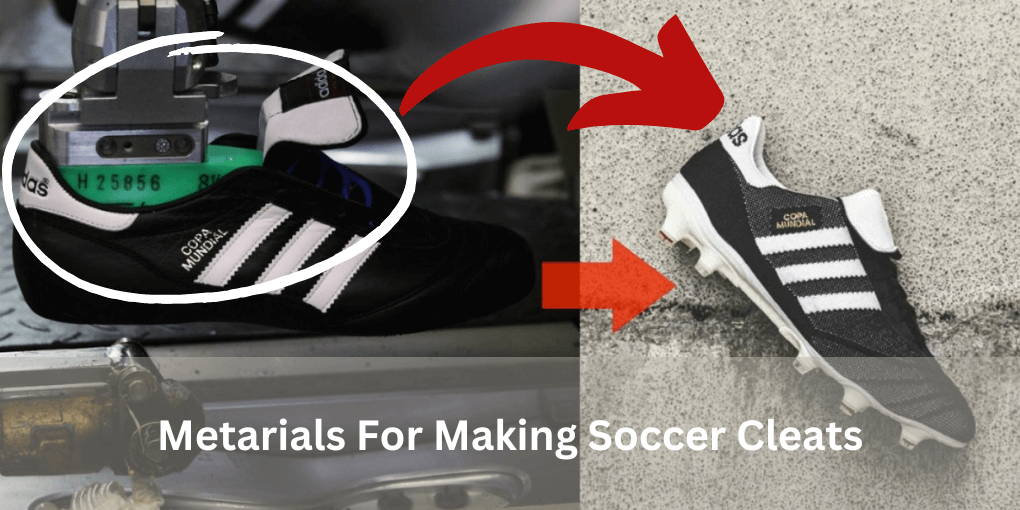
Football cleats support the toe of the shoe with two or more spikes that are longer.
In order to keep your foot firmly planted while running ahead, these bars are helpful.
Football cleats have a lighter base or sole than soccer cleats, allowing the foot and ankle to move about more freely.
The upper might be made of leather, kangaroo leather, or synthetic material.
Synthetic
Many of the cleats available at sports goods stores have synthetic uppers.
This is due to the synthetic material is lightweight, providing some protection from rain or adverse weather, and not requiring a lot of wear to become comfortable.
According to the great player Lionel Massi’s opinion, “Personally, I’ve always favored synthetic materials for their lightweight feel and responsiveness. It’s essential to find cleats that feel like an extension of your foot, providing that extra touch and control.”
Soccer boots with synthetic uppers frequently have textured surfaces for better grip.
Soccer players at the beginner to intermediate levels should wear synthetic shoes because they are the least expensive.
Lather
Some of the greatest soccer shoes available are made of leather.
They are popular among players of all skill levels, including intermediate and advanced players, because they have a great ball touch.
Leather cleats are more padded than synthetic cleats and are more durable. They are often a little more pricey but also simple to break into.
Kangaroo leather
Soccer cleats made of kangaroo leather are supple and incredibly comfy right out of the box.
They have the best ball touch of any soccer shoe now on the market.
Although it provides excellent padding and protection, kangaroo leather is not as strong as conventional calfskin leather.
This substance costs a lot more than synthetics and calfskin leather.
Be aware that California forbids the sale of goods made of kangaroo leather.
Final Thought
Yap!
We are now in the finishing stage.
Hopefully, You assume you now have a greater understanding of soccer cleats, including their purpose and types.
Click on this link to visit my recommended soccer equipment sites if you’re looking for further advice on soccer gear.
There, you’ll discover a variety of goods that, in my opinion, will satisfy your needs.
if you’re looking for further advice on soccer gear, you can visit our affiliate page on the 13 best soccer cleats in 2024.
Get the best pair of soccer cleats for you the next time you go shoe shopping.
You would feel at ease and like a real top athlete, in addition to being comfy.
Lastly, Want to be informed about the cleaning procedure after playing a soccer match? Read this essential guide for cleaning your favorite cleats.
FAQs
Soccer cleats are special shoes that soccer players wear to play the game. They have little spikes or studs on the bottom to help players run and stop more easily on the grass or field.
Soccer players wear cleats to stay steady on the grass and have good control of the ball. Cleats give them grip, so they don't slip while playing and can make cool moves with the ball.
To pick the best soccer cleats, think about where you play. If it's on grass, choose cleats with lots of little spikes. If it's on turf, get cleats with shorter bumps. Make sure they feel comfy and not too big or small.
Yes! Soccer cleats come in lots of fun colors. You can pick your favorite color or even find cleats with cool patterns. It makes playing soccer even more exciting!

